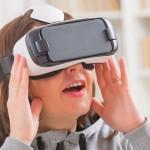
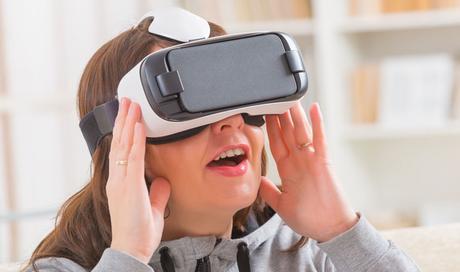
Technology experts predict that this year will be the year of virtual reality. However, the use of this type of technology can cause serious risks for our vision.
Virtual reality devices are special goggles that creates a 3D experiences through the screen they have. This kind of reality is being part of many video games because it creates a realistic experience.
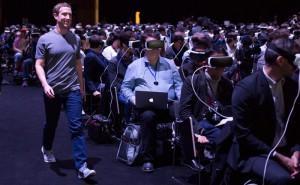
Mark Zuckerberg at the Mobile World Congress 2016
It is more than evident the strong commitment towards these virtual and augmented reality devices and the best example was seen at the World Mobile Congress. There have been introduced all kinds of systems with different resolutions and qualities.
These types of accessories can have a huge resolution and a range of vision –specially the expensive ones–, but the smartphones can be used as well for this purpose. Even Google shows you how to create a viewer by suing you own smartphone and a piece of cardboard.
Side effects on vision
Using and putting a screen in such short distance can surely have side effects on our vision:
Eyestrain
Staring at a screen whatever it is smartphone, a tablet or a monitor cause eyestrain and dryness. Besides if this is a daily routine, it can provoke permanent damage.
The eyes must keep focused on a pixel screen that uses just one refractive lens. Besides it does not manage correctly the problems derived from being at short distance.
The main signs and symptoms are eyestrain, dryness, stinging and constant blinking. The vision sometimes gets blurred at far-away vision as in up-close vision as well. If a virtual reality device becomes uncomfortable just a few minutes after you begin using it, this will be a sign of the eyestrain your eyes are suffering.
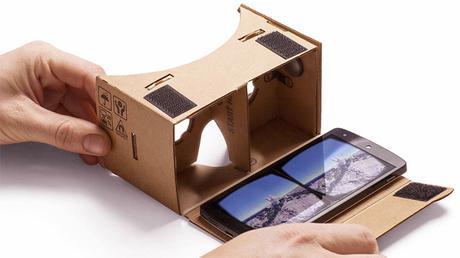
Myopia, especially in young people
Myopia or a visual defect in which distant objects appears blurred because their images are focused in front of the retina rather than on it, usually get worst when we sped so many time in front of a screen.
This is especially serious for children and adolescences since their eyes are still growing up. If young people’s eyes are subject to this huge effort, it will be normal that they quickly develop myopia and with high diopters.
However, besides the use of glasses, the solution to this problem will be on limiting the time they spend in front of a screen. According to a research made by Cambridge University, for each hour per week that a child spend outdoors, the risk of suffering myopia is reduced by a 2 per cent.
Insomnia
According to a recent research made by some Norwegian universities, looking at a screen in darkness provokes chronic insomnia. LCD and LED screens emit blue light that avoid the body to produce melatonin. This hormone is the one which initiate the process that leads us to the beginning of sleep and rest.
As a consequence of being focusing directly to one source of light, we are receiving stimuli that make our brain to believe that it is still daytime.
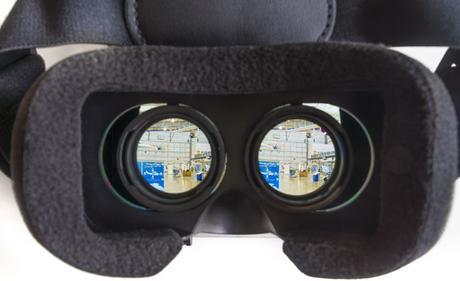
What to do in order to avoid these problems
- Control how much time you spend with these devices, especially in the case of children so we can avoid the excessive use of them.
- Use high-resolution screens. High-performance tools can make a difference in this case. The devices with higher-resolution screens, better color quality, definition, contrast and great visual field amplitude imitate the reality better. Therefore, the eyes do not make big efforts.
- Distance the screens. Unless you are using a device specifically design for wearing it in your head, it is recommended to distance the screen from the eyes at least at a distance as equal as your forearm.
- Get a good lightning around you: If you are not using a virtual reality goggles but a regular screen, it will be recommended to light up the place we are in. Therefore, the brightness of the screen will be reduced. However, the best option would be to use natural light instead of artificial one.
- Blink repeatedly in order to maintain the cornea well hydrated and in doing so we avoid the discomfort that appears as a result of the dry eye syndrome. But you can also use eyedrops.
- Use contact lenses with high-moisturing levels and high-water content. These types of contact lenses allow a higher gas exchange between the eye and the air.
- Use glasses with AR coating or glasses especially design for filtering blue light of screens.
This type of technological improvements are quite exciting and they can have many applications. Nevertheless, we must not forget that our vision does not evolve as fast as technology does. So, for that reason, we need to be aware of the consequences of it in our visual health.

